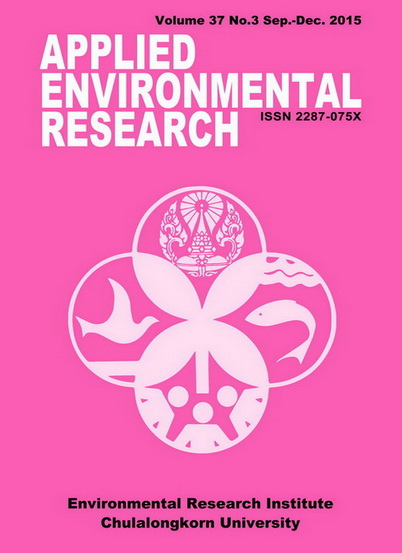Landscape Agroforestry Modeling for a Sufficiency Economy in Huai Raeng-Klong Peed Watershed, Trat Province, Thailand
Main Article Content
Abstract
This research focused on land use modeling at the landscape scale based on the sufficiency economy philosophy (SE). Using land suitability and pair-wise comparison methods, the study aimed to determine key performance indicators of agroforestry under the SE, to develop a landscape agroforestry model under the SE and to apply the derived model to evaluate the suitability of existing land uses within the study area. The key performance indicators were: the agroforestry indices (AFI)-organic matter, soil erosion, species diversity, income distribution, net present value, resources used, land holding size and acceptance of land use; and the landscape agroforestry indices (LAFI)-soil type, slope, distance to water resource, ability to access to main road, watershed class and conservation area. The AFI and LAFI were weighted based on expert judgment and used in weighted linear combinations to develop the landscape agroforestry model based on an AFI equation and an LAFI equation. The AFI equation was obtained from the land use types based on the SE level, and the LAFI equation was determined from the land suitability level (LS level). The final step showed that most land use types were categorized as being at the highest and high LS levels.
Article Details

This work is licensed under a Creative Commons Attribution-NonCommercial 4.0 International License.
Published articles are under the copyright of the Applied Environmental Research effective when the article is accepted for publication thus granting Applied Environmental Research all rights for the work so that both parties may be protected from the consequences of unauthorized use. Partially or totally publication of an article elsewhere is possible only after the consent from the editors.

